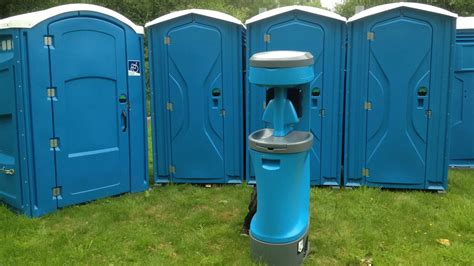How Do Portable Hand Washing Stations Work
Ronan Farrow
Apr 04, 2025 · 3 min read

Table of Contents
How Do Portable Hand Washing Stations Work?
Portable hand washing stations are a crucial element of hygiene, especially in situations where access to traditional plumbing is limited. Understanding their functionality is key to appreciating their effectiveness in preventing the spread of germs and illness. This guide breaks down the mechanics of these vital devices.
Types of Portable Hand Washing Stations
Before delving into the mechanics, it's important to recognize the variety of portable hand washing stations available. They differ primarily in their water source and waste disposal methods.
1. Self-Contained Units:
These are the most common type. They feature a built-in water reservoir and a waste tank. They're independent of external water and sewer connections, making them ideal for remote locations, outdoor events, and emergency situations. Water is typically dispensed via a foot pump or an electric pump.
2. Gravity-Fed Stations:
These stations rely on a raised water source, such as a water container positioned higher than the faucet. Gravity propels the water down to the faucet, eliminating the need for a pump. Waste disposal is usually handled through a simple drain tube.
3. Faucet-Connected Stations:
This type requires a connection to a pre-existing water supply. While not truly portable in the strictest sense, they can be easily moved around within a given location provided a suitable water source is present.
The Mechanics of a Typical Self-Contained Unit (Most Common)
Let's focus on the most frequently encountered type: the self-contained portable hand washing station. Here's a breakdown of its core components and how they work together:
1. Water Reservoir:
A large tank holds the water supply. The size varies depending on the unit's capacity. The water is usually fresh and potable (safe to drink).
2. Water Pump (Foot or Electric):
This is the heart of the system. A foot pump utilizes manual pressure to dispense water, while an electric pump is powered by batteries or an electrical outlet. The pump pushes water from the reservoir to the faucet.
3. Faucet:
A simple faucet controls the flow of water. Its design usually minimizes water waste.
4. Soap Dispenser:
Most units incorporate a soap dispenser. This can be a simple pump-style dispenser or even a bulk-fill container.
5. Waste Tank:
Used water and soap waste are collected in a separate tank. This tank needs to be emptied regularly.
6. Drainage System:
A simple drainage system allows the waste water to flow from the basin into the waste tank. Some units may incorporate a filter to prevent clogging.
Maintaining Hygiene with Your Portable Hand Washing Station
Maintaining the cleanliness of the station is as crucial as its functionality. Regularly cleaning and sanitizing the entire unit—especially the reservoir, waste tank, faucet, and soap dispenser—is essential for preventing the spread of germs. Emptying and refilling the water reservoir frequently is also a must.
Conclusion: The Importance of Portable Hand Washing Stations
Portable hand washing stations offer a simple, yet effective way to promote hygiene in diverse settings. Their ease of use and adaptability to various environments make them indispensable for maintaining public health and preventing illness. By understanding their operation and diligent maintenance, we can maximize their positive impact on hygiene and public health.
Featured Posts
Also read the following articles
| Article Title | Date |
|---|---|
| How Fast Do Cichlids Grow | Apr 04, 2025 |
| How Did Brody Beaver Die | Apr 04, 2025 |
| How Has Softball Changed Over The Years | Apr 04, 2025 |
| How Do You Weigh Coke | Apr 04, 2025 |
| How Do Lawyers Find Your Bank Accounts | Apr 04, 2025 |
Latest Posts
-
How Long Does 50 Ml Of Cologne Last
Apr 05, 2025
-
How Long Does 5 Gallons Of Propane Last
Apr 05, 2025
-
How Long Does 4 Tire Change Take
Apr 05, 2025
-
How Long Does 30 Oil Life Last
Apr 05, 2025
-
How Long Does 25000 Puffs Last
Apr 05, 2025
Thank you for visiting our website which covers about How Do Portable Hand Washing Stations Work . We hope the information provided has been useful to you. Feel free to contact us if you have any questions or need further assistance. See you next time and don't miss to bookmark.
